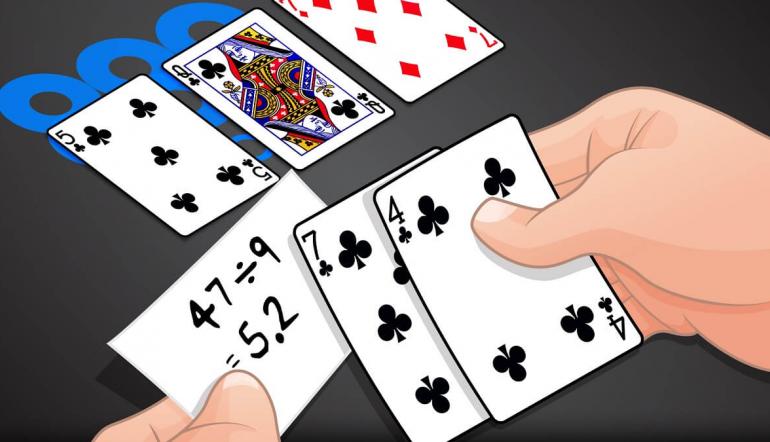Texas Holdem Preflop Odds Calculator
How the poker calculator works
Using a Poker odds Calculator Want to know how far ahead or behind you are in a Texas Hold’em hand against one, two or more opponents? Our poker calculator is the perfect medium for finding out the odds in any given situation. How to Use the Poker Odds Calculator. Pick the poker variation you're playing in the top drop-down menu and the number of players in the hand (you can add in up to five players). Odds are available for: Texas Holdem, Omaha, Omaha Hi-Lo, 7-Card Stud, 7-Card Stud Hi-Lo and Razz. A portion Texas Holdem Preflop Odds Calculator of each bet placed will contribute to the pot, and once a lucky player has won the jackpot, the amount will be reset and will continue to grow again as bets are placed. The best way to calculate precise preflop odds is to use a dedicated odds calculator. However, here are a few quick and dirty tricks to know rough odds on the go: A pocket pair against two.
The Grosvenor Casinos Poker Calculator works by using what’s known as a “Monte Carlo” algorithm. This algorithm estimates the percentage of making a hand in Texas Hold’em by simulating what would or could happen had the hand been played out multiple times. The calculator runs all the possible outcomes of the hand from the point at which the player is on the board until it hits a limit of 12,500 simulations.

Why 12,500?
To ensure a perfectly accurate percentage each time, one would need to run hundreds of thousands of simulations, which would cause the calculator to run much slower – especially where there are no board cards. Instead, we have chosen to impose a limit of 12,500 possible outcomes, which means the calculator is within 1.5% accuracy of the displayed percentages. For calculations that have less than 12,500 outcomes (when the hand progresses further) the calculation is more accurate. To ensure the tool calculates hand percentages as quickly as possible, the calculations run on a separate server – as opposed to the individual’s computer.
Betting before the flop can sometimes be a blind bet, because when the flop comes things can change drastically. What can seem like a clear advantage can turn into a trap when the Turn or River or Flop cards hit the poker games.
To calculate with which hand you have better chance against other hands, we have assembled the most common grouping of hands against other hands along with their chances of winning (all the way to the River).
Same Hand – ex. QJ vs. QJ
Can you guess the odds? That's right, 50%-50%. If it's suited vs. offsuit, the suited has the edge of course, a 2.5% advantage.
Pocket Pair vs. Two Overcards – ex. 99 vs. KQ
This is a close call. The pocket pair has a small advantage with 55 % to the two overcards' 45%. In the case of having a hand like QJ-suited the advantage is with this hand over a hand with a small pocket pair (55 or lower), because with the QJ you can still form a Straight without having the pair lower your chances of achieving it.

Pocket Pair vs. Smaller Pocket Pair – ex. AA vs. 88
The bigger pair has the advantage here, of course, with 80% to the lower pair's 20%.
Pocket Pair vs. Two Undercards – ex. KK vs. J9
The pair is the favorite with 80% to 20%. The two undercards have a chance of between 23% and 14%, depending on if they are suited and if the pocket interferes with their straight making ability or not.
Pocket Pair vs. Same Card & One Undercard – ex. KK vs. KQ
This can be a shifty situation. The Pocket Pair has the upper hand here (no pun intended) with about 85% to 15%, while in case the other pair is suited the odds change to 80% to 20% at best.
Pocket Pair vs. Same Card & One Overcard – ex. QQ vs. AQ
The advantage here is on the side of the pair with between 70% to 30% and 65% to 35%.
Pocket Pair vs. One Undercard & One Overcard – ex. JJ vs. KT
The odds here are similar to those of the hands above, with 70% to 30% in favor of the pair.
Two Undercards vs. Two Overcards – ex. AK vs. QJ
While the advantage here is clearly with the overcards – 65% to 35%, the odds change when the undercards are far enough from the overcards and suited without matching the overcards' suit, to around 60% to 40%.
Texas Holdem Odds Calculator App
Two Middle Cards vs. Undercard & Overcard – ex. KT vs. QJ

In this case, the edge is with the over/under cards. 60% to 40% which can be reduced to around 52% to 48% if it involves middle-suited connectors that are not of the same suit as the over/under cards and if there is no straight making interference.
Dominated with the Same High Card – ex. QJ vs. QT
The hand with the higher card has a big advantage with around 66.6% to 33.3%. This advantage starts to diminish as the kickers get lower due to split pot possibilities.
Dominated with the Same Low Card – ex. AQ vs. KQ

Texas Hold'em Preflop Odds Calculator
The hand with the higher card has a 66% advantage, while if it's a suited connector against unsuited cards that has a small chance of making a straight the higher kicker hand has a maximum advantage of 40%.